Since ancient times, rose petals have been used in food and medicine around the world. And no wonder! Rose petals are filled with fragrance and color, and all are perfectly edible (if they haven’t been sprayed with chemicals).
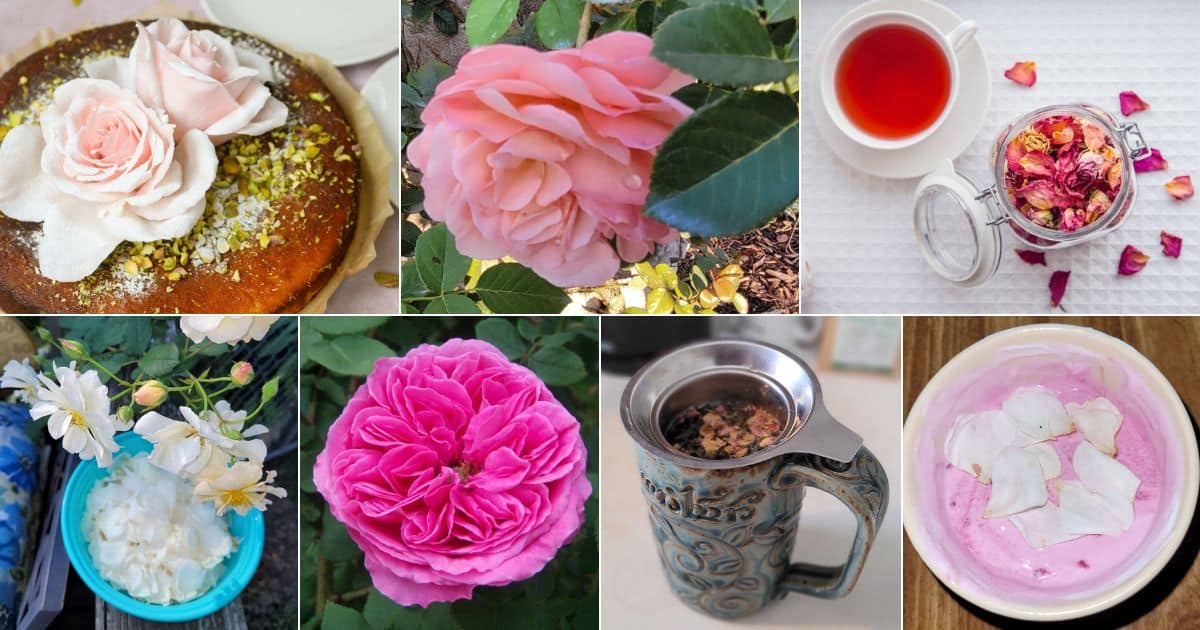
But did you know that they are also good for you? Rose petals are high in antioxidants, which protect cells from damage, reduce inflammation, and help increase your immunity to diseases.
Rose petals can be used in food, in teas, in skincare, and in many other ways.
Jump to:
- Guidelines for Collecting Rose Petals
- How to Gather Rose Petals
- 1. Use Rose Petals for Making Tea!
- 2. Make Rose Sugar
- 3. Make Rosewater
- 4. Other Tasty Things You Can Make with Rose Petals
- 5. Pets Love Rose Petals Too
- 6. Make Potpourri with Roses
- 7. Use Gallica Roses to Capture a Mermaid!
- 8. Make a String of Rose Beads
- 9. Can I Make Rose Oil from Rose Petals?
- 10. Make an Oil Infusion with Rose Petals
- Grow the Best Roses for the Best Rose Petals
- Other old roses grown for amazing fragrance (and they’re edible):
Guidelines for Collecting Rose Petals
Here are a few rules of thumb for picking rose petals for best results.
- All rose petals are edible – if they haven’t been sprayed with chemicals. Choose only organic roses.
- Don’t eat the roses that you get from a florist. They have definitely been sprayed with pesticides and fungicides.
- Find roses that are fresh, colorful, and cheery and not brown.
- Dark-colored blooms with more fragrance will have a stronger flavor than pale blossoms with little scent.
- Eat fresh rose petals the same day you harvest them unless you are drying them.
- If it’s going to be a few hours before you can eat, clip the whole blossom to keep the petals fresh. Otherwise, the petals will dry out quickly and not taste as good.
How to Gather Rose Petals
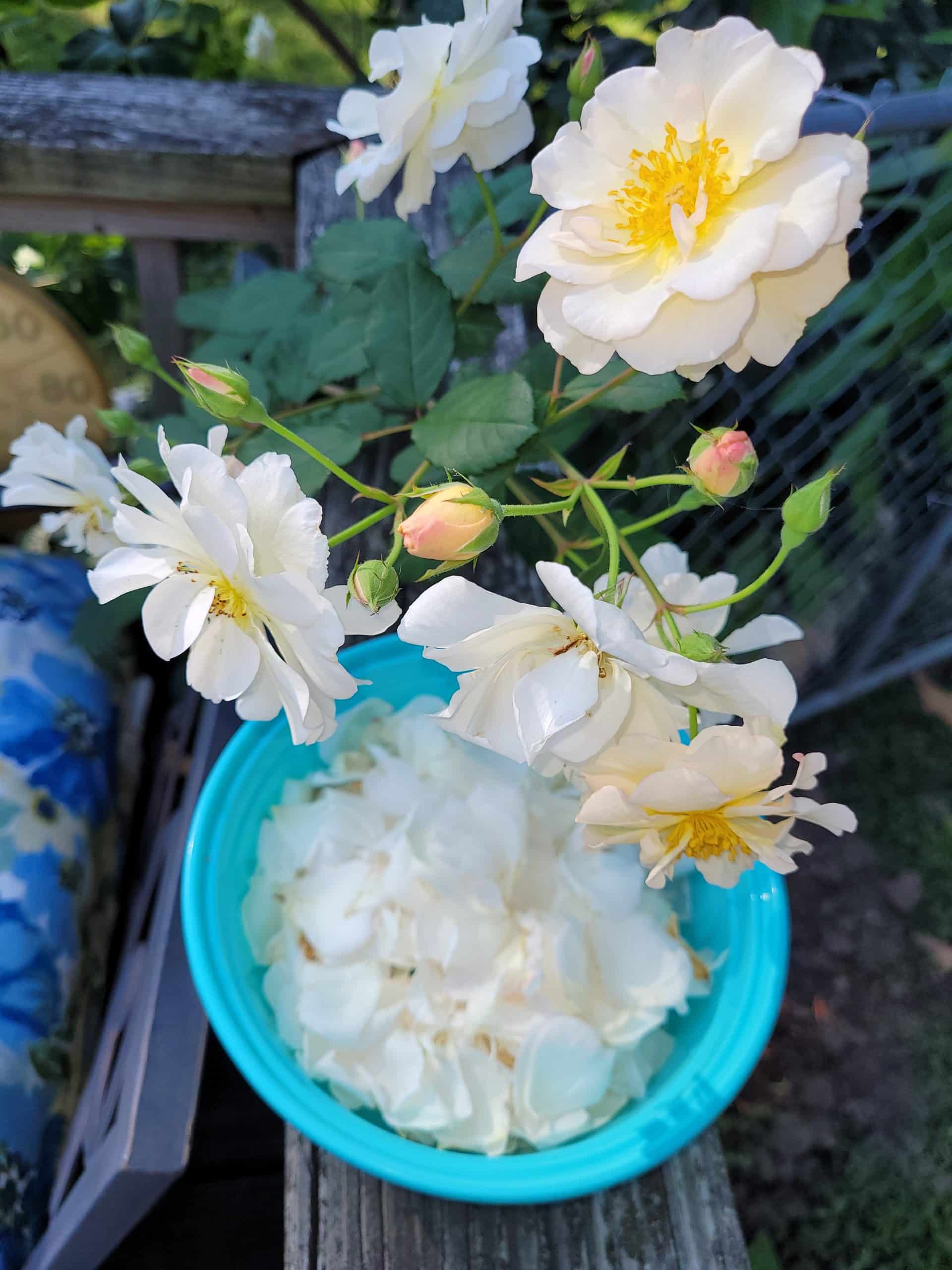
With a large, lightweight bowl underneath the rose blossom, wrap your hand around the back of the blossom and pull it forward to pull all the petals off.
If you’re making food or decorations, focus on gathering petals from fresh roses instead of roses that are starting to shatter or are past their prime. For potpourri, older petals are fine.
You’ll find some little insect friends among your rose petals, so sort them outside by spreading the rose petals across a large piece of newspaper or white cloth like a tea towel. Small spiders live in many rose blossoms to prey on smaller insects. I let these gals live. Cucumber beetles, which look like green ladybugs, make the petals fall off the roses. I always squish them on sight.
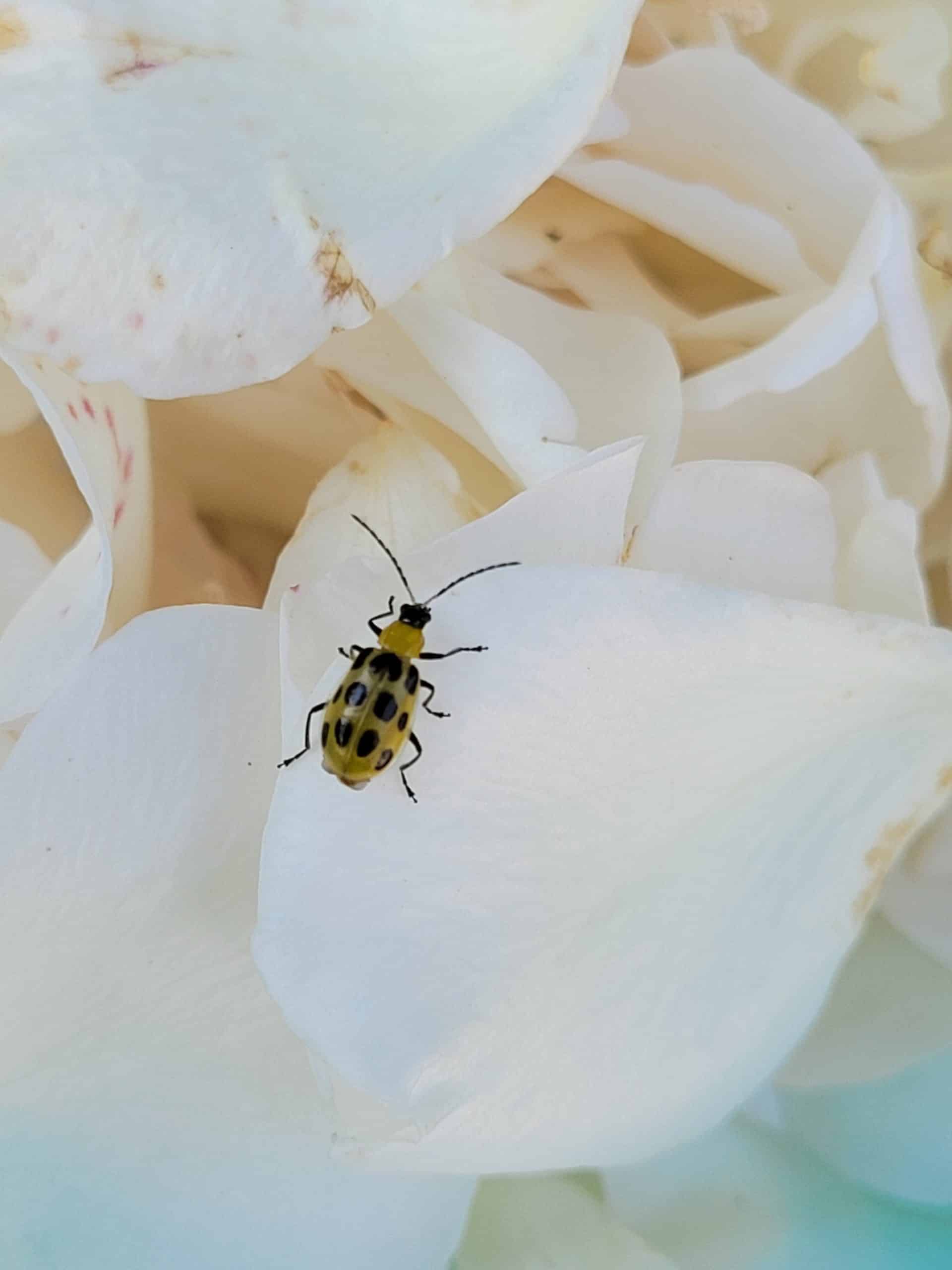
Once you’ve shooed off the beneficial insects (and squashed the destructive insects), go through the petals and pick out the brown or wilted ones and clean up any trash that you don’t want in the petals, such as bug poop or twig bits. Then your petals are ready for drying or other uses.
Gather clean, organic rose petals from plants that haven’t been sprayed. Lay down some sheets of newspaper and spread the petals out, and let them dry for several days in a dark, cool space out of the sun. Store in an airtight jar until you’re ready to use them.
1. Use Rose Petals for Making Tea!
Technically, rose tea isn’t actually tea – the word “tea” is supposed to refer to the caffeinated drink made with the leaves of Camellia sinensis. Anything without tea leaves is a tisane or an herbal infusion. Sometimes folks can be sticklers about what tea is or isn’t. But not me! Life’s too short.
At any rate, rose tea is made by steeping rose petals or rosebuds in hot water. Herbal teas don’t contain caffeine. However, if you need caffeine, you can blend the petals with black or green tea for a delicious pick-me-up (and then it really is rose tea).
How to make a mug of rose petal tea:
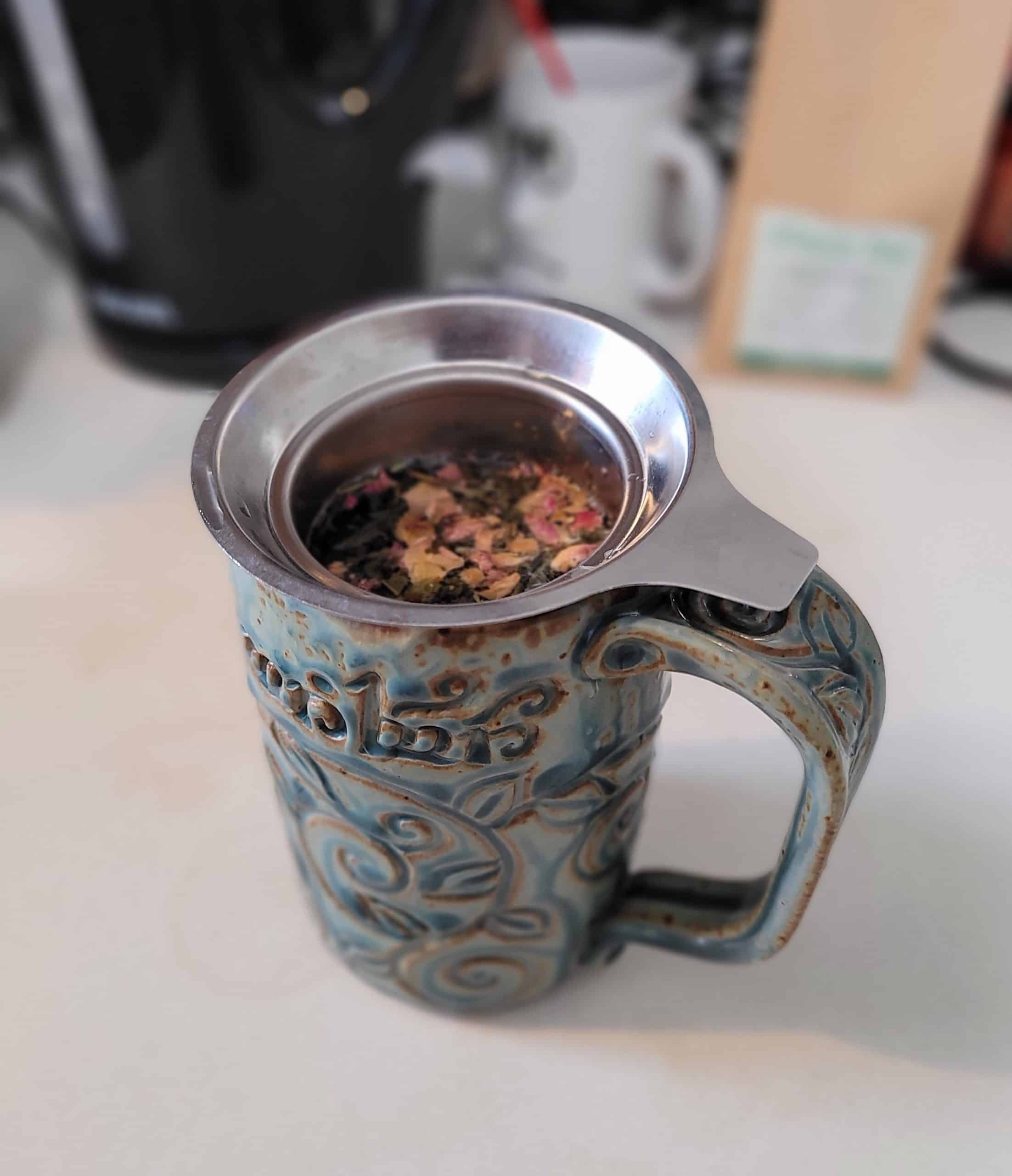
Boil the water, of course!
Get a tablespoon of dried rose petals or rosebuds and roughly chop them to release their fragrance. Drop them into the tea strainer in your tea mug. (If you like stronger tea, add a little more to taste.)
Pour the boiling water over them and let them steep.
Don’t steep rose petals too long – 7 minutes is plenty. Oversteeping them can give your tea an astringent taste.
Take out your tea strainer and add cream and sugar. Sip daintily.
Pro tip: Use warm, not boiling, water to make green tea and rose petal tea. The flavor is less astringent and more mellow. Allow a little extra steeping time.
You can also sprinkle dried rose petals on top of chai tea for a lovely (and delicious) look.
2. Make Rose Sugar
Rose sugar, which is basically sugar infused with rose petals, makes a fragrant topping for fruit, cakes, and cookies and is delightful in tea.
In a wide-necked glass jar, place a single layer of fresh, clean rose petals at the bottom. Cover with a half-inch of white sugar, then another layer of rose petals. Keep alternating sugar and rose petals until you have the amount of sugar you want.
Let it sit until the rose petals are completely dry. Then mix sugar and petals together and store them in an airtight container.
3. Make Rosewater
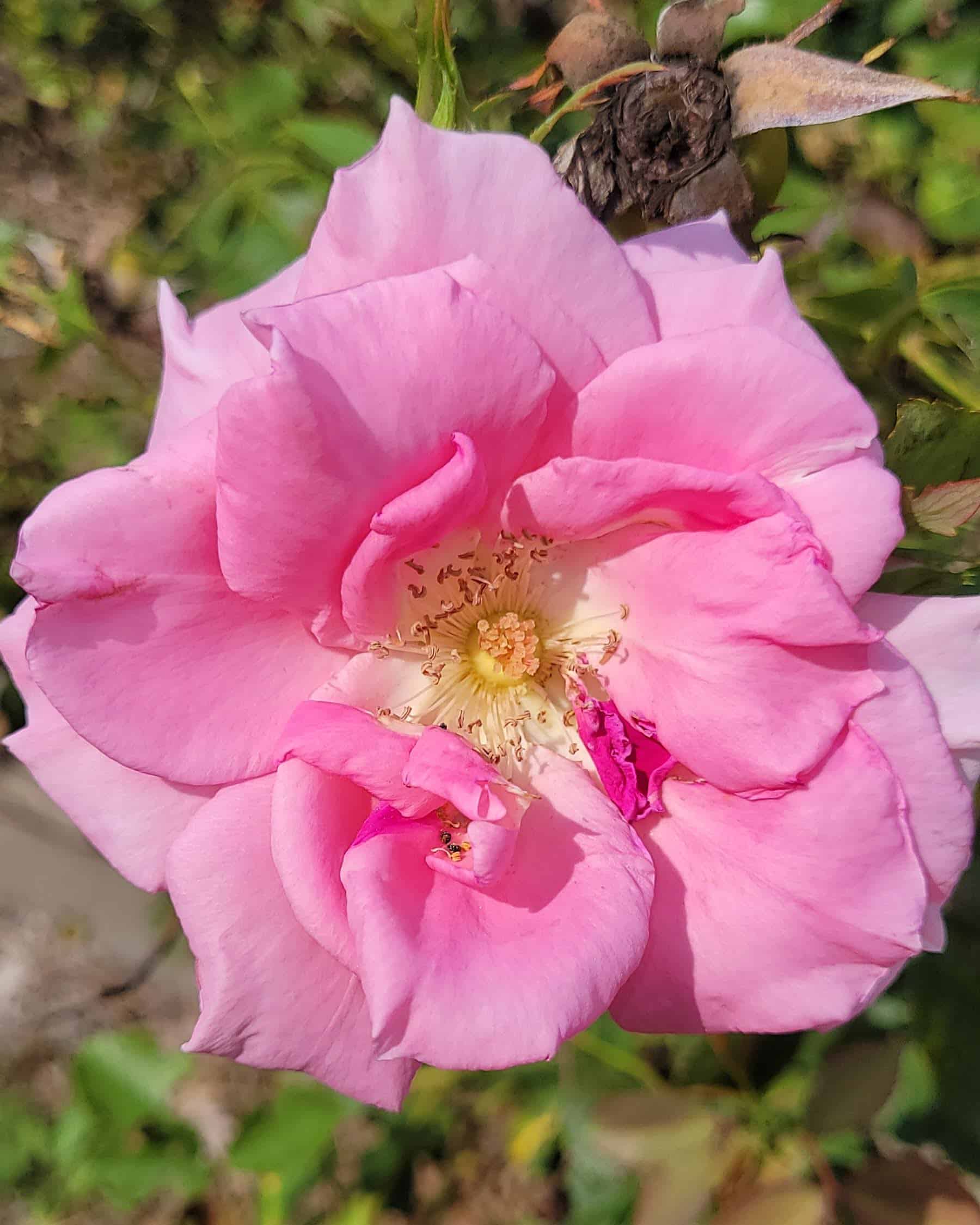
Rosewater is a big part of cuisine for folks in the Middle East and around the Mediterranean, where it’s added to all kinds of delicious dishes. Rosewater is a beloved ingredient in drinks, yogurt, salad dressing, puddings, cake, and frosting, along with tasty desserts that involve pistachios.
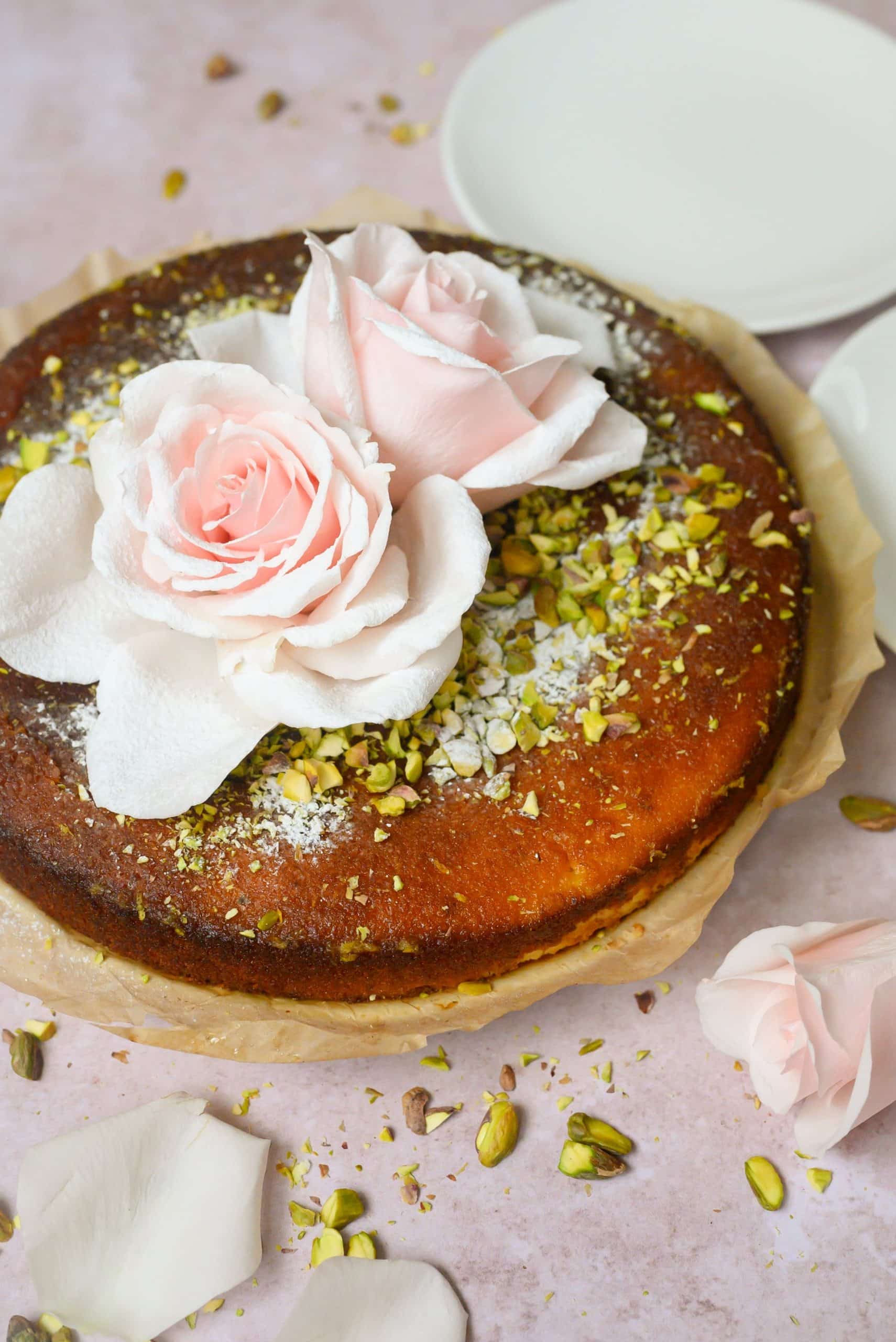
The rosewater tastes like a rose smells when you breathe in its fragrance.
Rosewater used to be a part of dishes in early America, but it was slowly replaced by vanilla extract instead. Try swapping out vanilla extract with rosewater in your recipes and see what you think.
If you haven’t used rosewater in your food before, start by adding only a little, like a ¼ teaspoon.
Here’s how to make your own rosewater!
You need …
- 4-5 rose blossoms
- A saucepan and lid
- A small heatproof bowl that fits inside the saucepan
- Ice cubes
Remove the rose petals from the roses and gently rinse them off.
Set the bowl inside the saucepan. Tuck the rose petals around the bowl. Don’t let any petals fall into the bowl – this is where the rosewater is going to collect.
Add just enough distilled water to cover the petals. (Do not put any in the bowl.)
Put the lid of the saucepan on upside down. This will allow the rosewater to condense and drip into the bowl.
Turn the heat up until the water around the roses is simmering.
Put ice cubes in the top of the upside-down saucepan cover to increase condensation. When ice melts, add more. Keep doing this.
After 30 minutes, the rosewater will be ready. It will have condensed into the bowl in the middle.
Let everything cool. Then put on oven mitts and carefully remove the bowl (it is very hot), and slowly pour the rosewater into a clean glass bottle. It will be good for 3 or 4 months.
You can use rosewater as a facial toner as well. When you spray it on your face, it will tighten your pores and get rid of oil.
4. Other Tasty Things You Can Make with Rose Petals
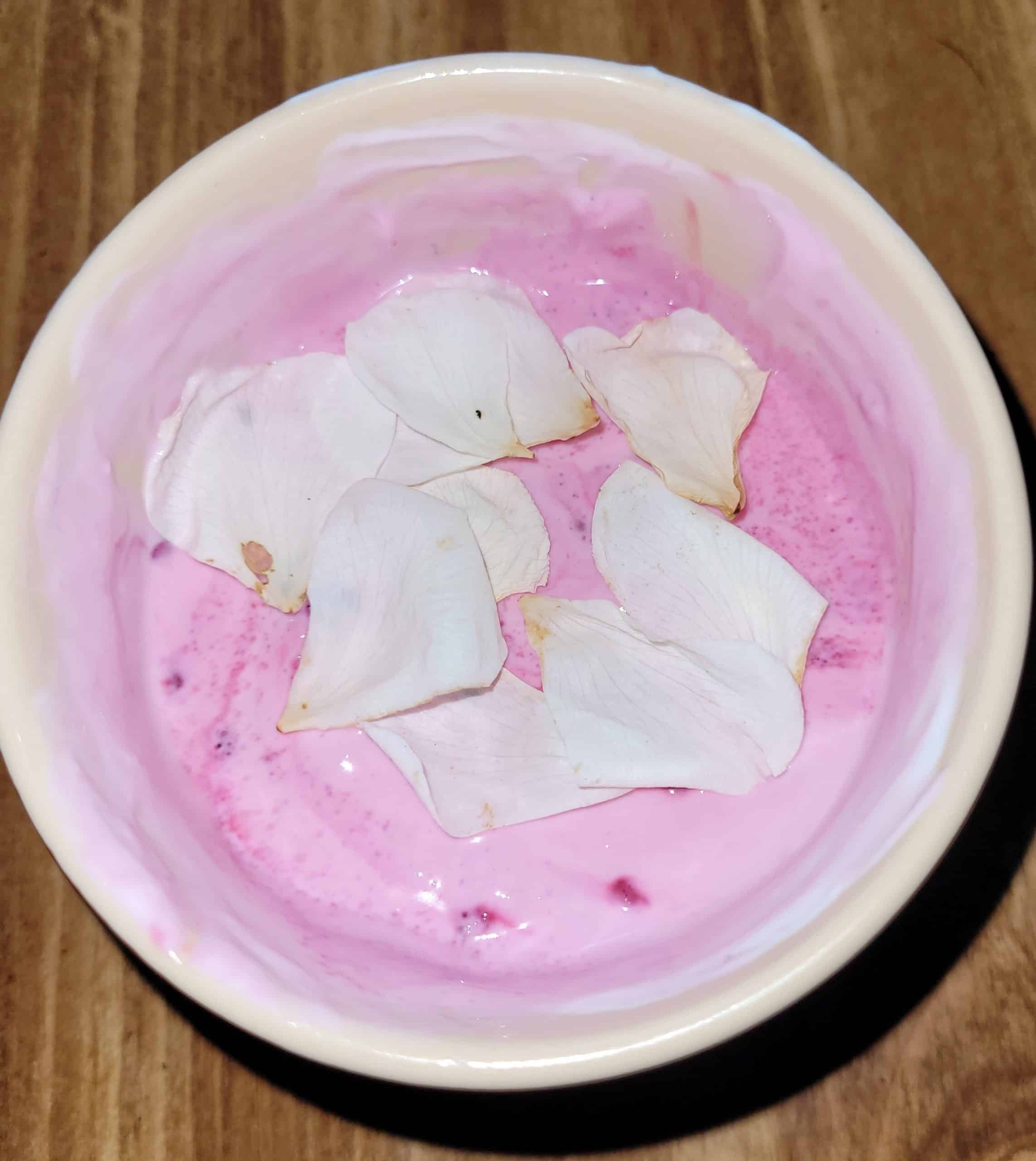
For edible décor on cakes, brush rose petals with egg whites and sprinkle them with sugar.
If you have an ice cream maker, rose petal sorbet is beautiful and tasty.
Rose petal syrup is great for ice cream and cocktails.
Make elixirs, tinctures, and vinegar with rose petals. Don’t forget jams, jellies, and marmalade!
In Chinese medicine, the rose buds, not just the petals, are used for menstrual issues, liver qi stagnation, and emotional constraints.
5. Pets Love Rose Petals Too
Bunnies and chickens will eat rose petals. I used to have a Barred Rock hen who would make a beeline to the rosebush and start plucking any petals in her reach and eat them.
Add them to the greens you give to your lizards and turtles to liven up their daily salad. Give them to your hamster to make a nest, or mix a few rose petals in with their food.
6. Make Potpourri with Roses

Once again, the best roses for this will have the strongest fragrance – and results will vary between rose varieties.
When I was a kid, Grandma Mary helped us make potpourri with her yellow rose – which I realized years later was a ‘Harison’s Yellow’ – didn’t make very strongly scented potpourri.
This turned out to be true for many roses I encountered until I dried the petals of ‘Mme. Isaac Pereire,’ an intensely fragrant bourbon rose bred in 1880. Those petals held their fragrance for years.
Dry the rose petals and add other dried, scented things, like lavender heads, bits of myrrh, or cosmos petals. Add a drop of essential oil to the potpourri and stir it up to strengthen the fragrance. Once they dry, add a little silica gel to the potpourri to keep it dry (especially if you live in a humid place).
7. Use Gallica Roses to Capture a Mermaid!
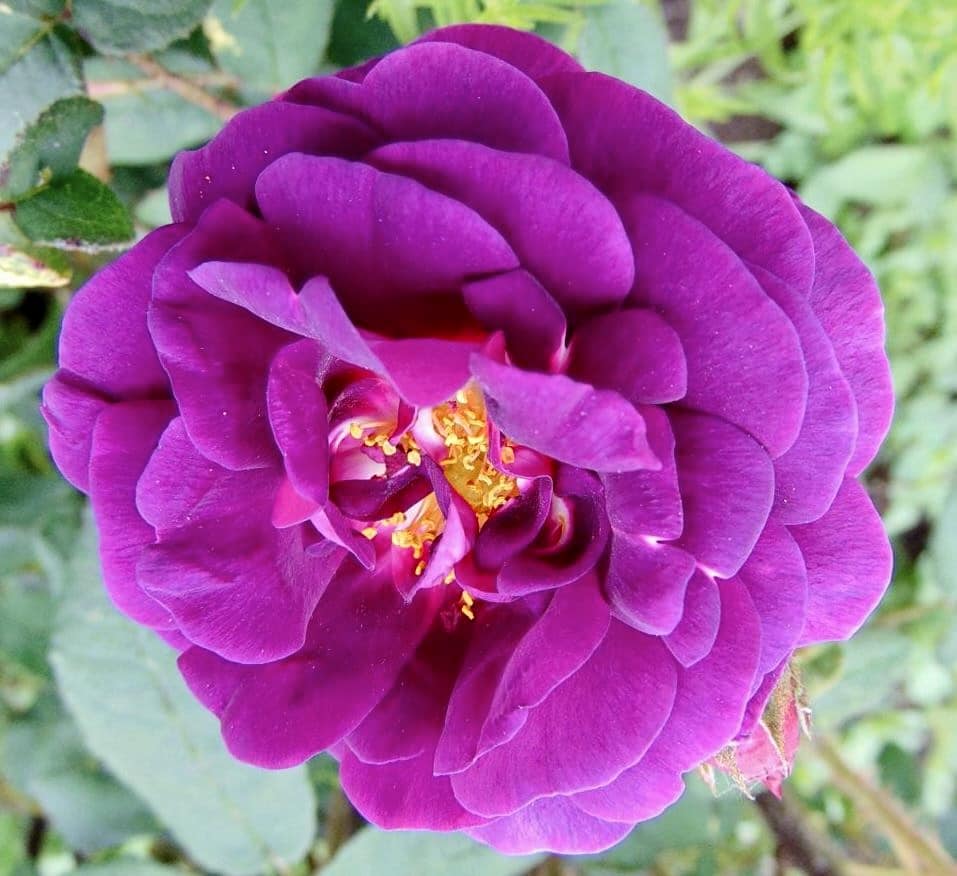
Some French websites about roses state that “an old Scandinavian sailor” says that if you want to catch a mermaid, you have to plant a rosebush on the shore. When it blooms, the mermaids, attracted by the perfume, arrive … and fall asleep. Easy peasy!
8. Make a String of Rose Beads
Rosaries got their name from when they were made with rose petals made into beads and strung together. Rose beads are durable and can last for a surprisingly long time, so this is a great way to save important roses like those from a wedding bouquet or a funeral spray.
To make your own rose beads, grab these things:
- Blender
- A saucepan (enameled)
- Wooden spoon
- A small pointy instrument for poking holes
- Nylon beading thread
- Several quarts of rose petals!
- Rose oil (optional) for a stronger scent
Gather rose petals, choosing those with a strong fragrance. Don’t worry about the color of the petals. Even if you use white or yellow rose petals, the beads will fade to dark red or brown.
Put the petals in the blender, adding ¼ cup of water for every 2 cups of petals, and chop them until they have a fine texture.
Put the rose pulp in a saucepan over low heat. Do not boil, as this kills the fragrance. Keep mashing it up against the sides of the saucepan, and when it starts drying out, scrape it down, mix it up, and mash it against the sides again. If it gets crumbly, add a little water. Keep doing this until the mixture is a paste that sticks together well.
This material should feel like clay, not pesto.
Let it cool. If it’s watery, soak up the extra water with a paper towel.
Then work the material like clay and make marbles out of it. Add a drop of or two of rose oil for extra fragrance. The beads will shrink as they dry, so form the beads with that in mind.
While you’re shaping them, have some rose oil blended with coconut oil handy. Add this to your hands now and then as you’re rolling them. This will keep it from sticking to you and will keep the beads from cracking when they dry.
Stick a thin knitting needle or ice pick through the beads to make a hole for the thread. If the bead falls apart, re-form the bead around the needle and then pull it out.

The rose beads will dry and darken over two or three days. Run a little fan over them and keep moving them around. You might even run a nylon thread through them and string them up so the hole for the thread doesn’t close while drying.
The bead will be rock-solid when dried. Polish them and keep them on a string. If their fragrance isn’t strong, give each bead a rub with rose oil.
When you’re not wearing them, wrap them in a soft cloth with rose oil and keep them in a closed container so they stay fragrant.
9. Can I Make Rose Oil from Rose Petals?

Well, yes and no. You can make rose oil, but it’s going to be a weak imitation of the real thing. Here’s why.
The summer damask rose (Rosa x damascena) is an old cross between Rosa gallica and Rosa moschata that is cultivated in Turkey, Iran, Bulgaria, Syria, and Morocco. The flowers and hips of this rose yield extremely valuable essential oils – rose otto or attar of roses.
Why is rose oil so valuable? Because you have to pick 2,000 petals of the summer damask, rose to distill one drop of essential rose oil – and 1,160,000 petals to make one ounce! And you have to pick these roses before dawn, while the dew is fresh on their leaves, and distill them the very same day.
So … that might be a bit of a challenge for most people.
The distillation process also creates an inexpensive byproduct known as rosewater, which is used widely in food (especially desserts!) and skin care. Another byproduct is rose absolute, used for scenting soaps and fragrances.
10. Make an Oil Infusion with Rose Petals
To make an oil infusion with the rose petals, use these ingredients:
- An overflowing cup of rose petals (over 1 cup)
- A wooden spoon
- 1 ½ to 2 cups jojoba or coconut oil
- A clean glass jar (like a Mason jar) with a tight-fitting lid
- A windowsill that gets at least 6 hours of sun daily
Dry the petals of your roses thoroughly. Pile them into your Mason jar and press them with the spoon to bruise them and release the fragrance. Add the jojoba oil, mixing so the petals are covered, then leave on a sunny windowsill for 4 to 6 weeks. Agitate the jar every few days to mix petals and oil.
When the time is up, sieve the oil into a dark glass bottle, pressing the oil out of the petals. Seal and keep in a cool, dry place. Use the oil as a beauty oil, or add it to the bath.
Grow the Best Roses for the Best Rose Petals
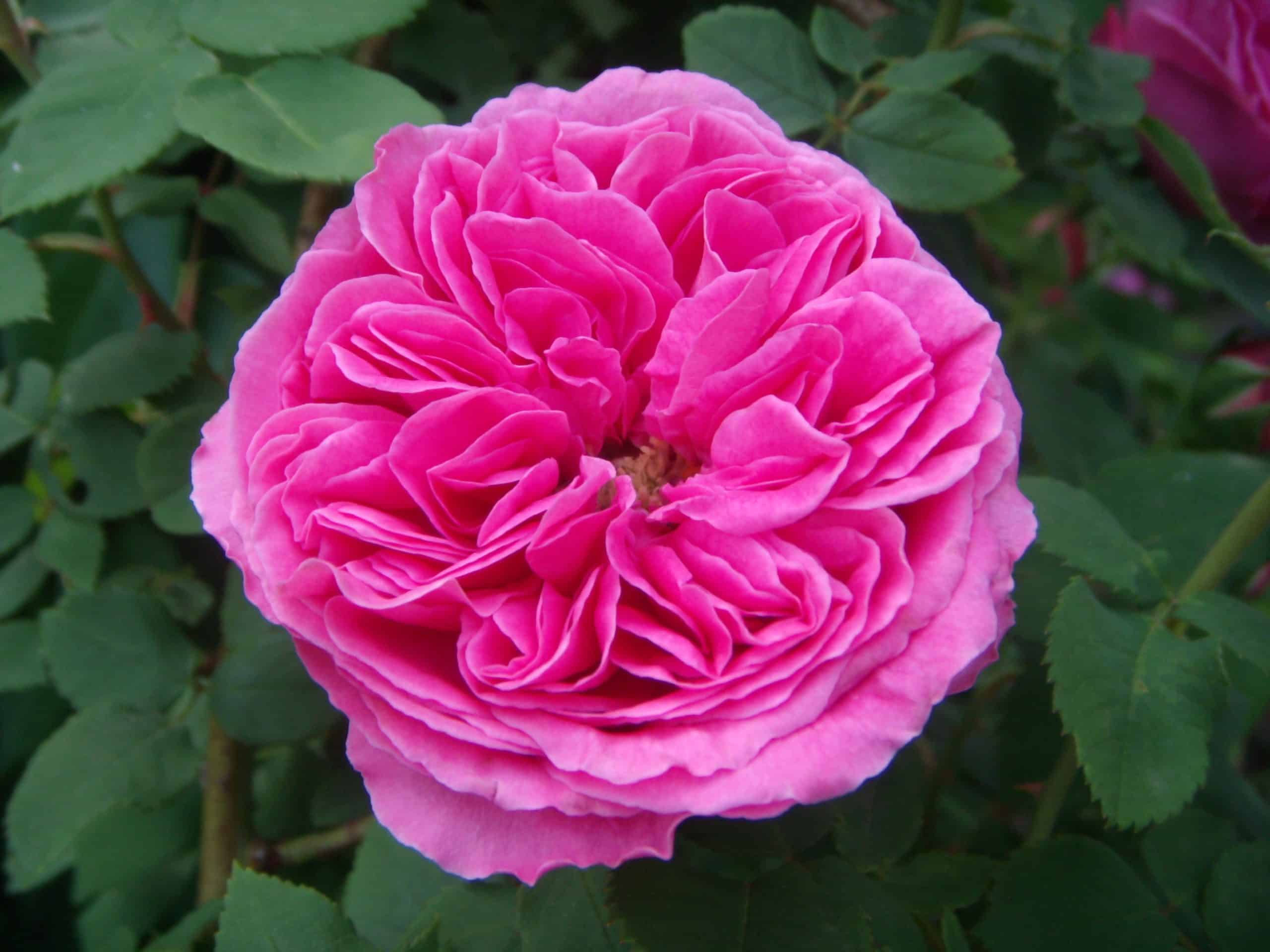
If you want especially fragrant roses for potpourri, eating, or making tea, you might have to grow your own. Modern roses have petals that taste bitter. Old rose petals taste sweeter, and they’ll have much more fragrance.
The old, really fragrant roses aren’t often seen where I live here in Missouri. American gardens have a conformity problem in that many gardens and landscapes look much like everybody else’s.
Other old roses grown for amazing fragrance (and they’re edible):
- The centifolia rose (Rosa centifolia), aka cabbage roses
- Rose de Resht
- Apothecary rose (Rosa gallica)
- Jacques Cartier
- Hebe’s Lip
- Madame Hardy
- Tour de Malakoff
- Fantin Latour

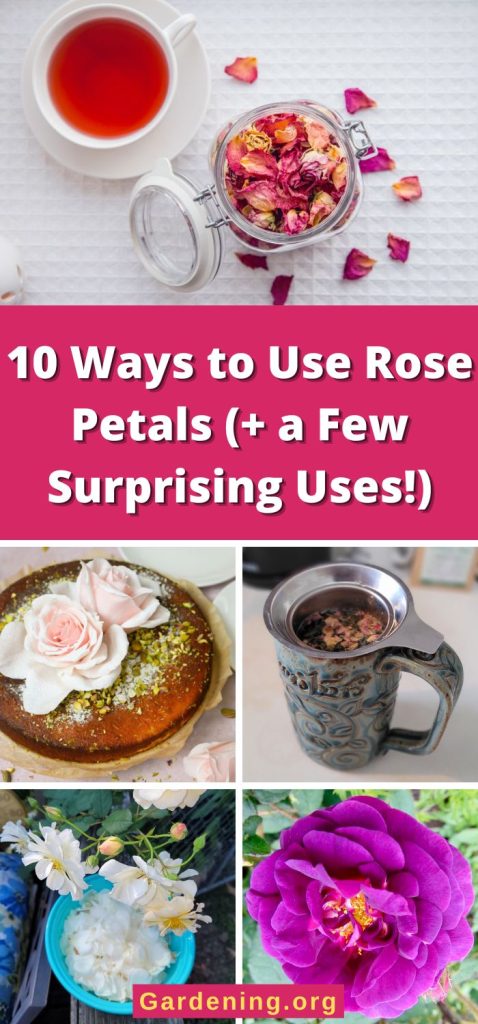
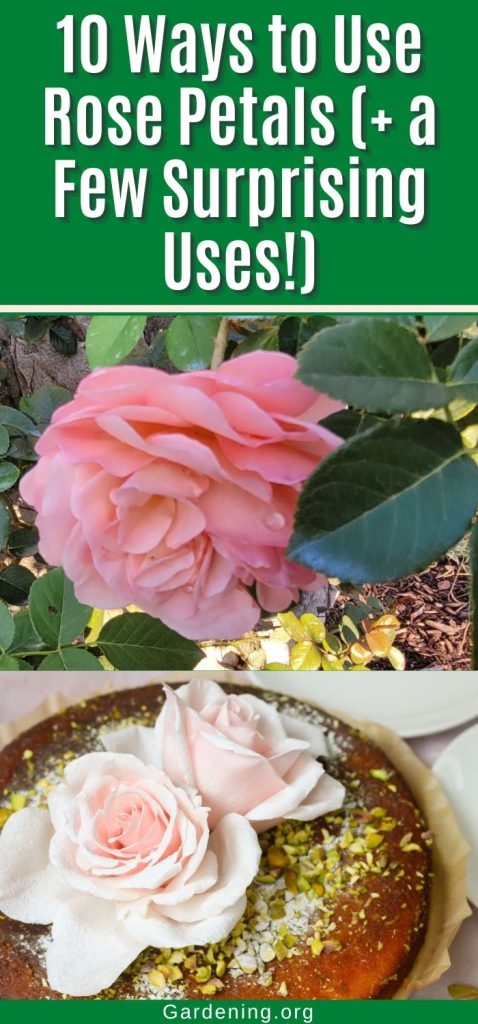
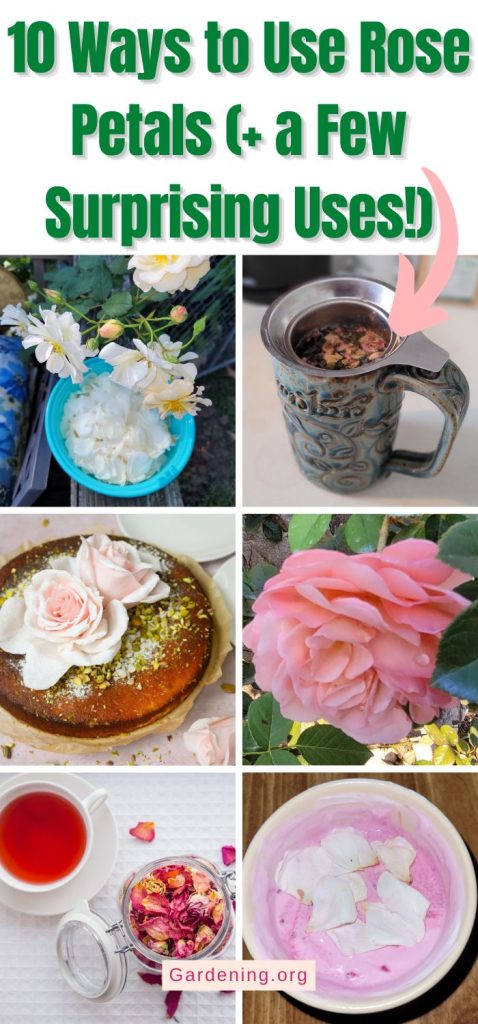
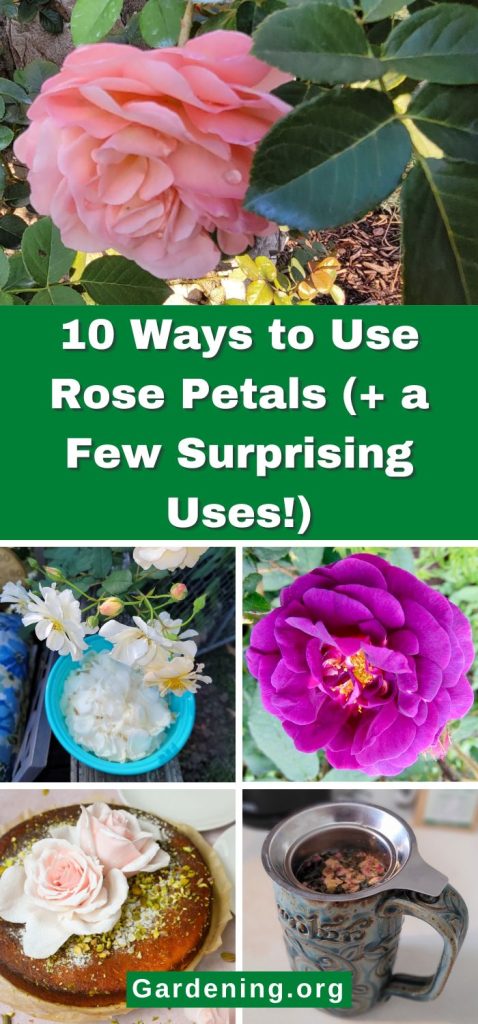

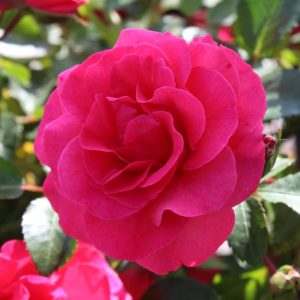


Leave a Reply